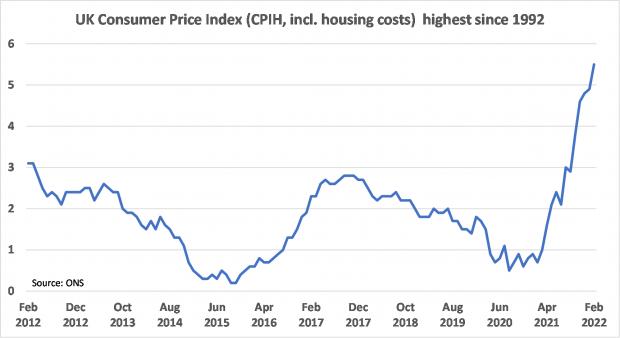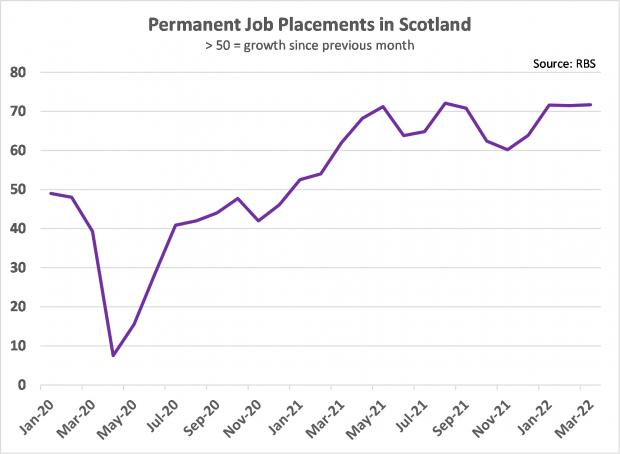In the three months leading up to February 2022, unemployment in Scotland fell to 3.5%. According to official figures, this is the lowest Scotland has seen since the final quarter of 2019.
However, this statistic could be a “false positive” given that there were 25,000 fewer people in employment at the end of February compared to the end of 2019. Experts say that this drop can be explained by the increase in the number of people who are “economically inactive” (those ages 16-24 who aren’t in employment and are not actively seeking work).
The three months leading up to February 2022 saw an estimated inactivity rate in Scotland of 22.5%. This was 0.8 percentage points higher than the same period 2 years earlier and 0.4 percentage points up from the previous quarter.
The monthly job report released by the Royal Bank of Scotland displayed a further increase in permanent jobs across the country in March, with the rate of growth slightly ahead of February. However, this figure saw the most significant reduction in permanent candidate availability in three months, a number that has been consistently decreasing since February 2021.
The big question is, “Why aren’t candidates moving jobs?”
To gain a better understanding of the reasons, we need to explore the push and pull factors that motivate people to remain in a job VS the benefits of seeking new professional avenues.
In this situation, push factors refer to fundamental, dissatisfying reasons that encourage individuals to want to leave their current roles. For example, poor salary or working conditions; lack of progression opportunities; a work culture that doesn’t quite align with theirs, or simply bad treatment from management.
Currently, the most universal push factor across the country is likely to be low wage growth in comparison to the inflation rates.

Excluding bonuses, average earnings in February rose 4.1% from a year previously. However, after taking inflation into consideration, earnings fell by 1.3%, the most since late 2013.
Some of the reasons employees are pulled towards new positions could include better salary and benefit opportunities; more flexible working options; better location and work culture, or a company whose values align more with their interests and career goals.
During March, there were over 55,000 jobs advertising throughout Scotland – 6% higher year-on-year and in February 2022 – so the lack of choice certainly isn’t the issue at hand. The high demand that’s currently apparent throughout the country is causing attractive salaries and benefits packages to rise to the surface, offering some protection from current financial pressures from increasing inflation rates.
Looking at these push and pull factors, it would seem evident that candidate movement should be expected across the country. However, the reality is much different. People are prioritising job security and financial shelter as they remain with their current employers.
Writing in yesterday’s Herald, s1jobs Managing Director, Gavin Mochan, said: “Demand for staff is still on the up, and this will force employers to turn up the salaries on offer. The pushes and pulls are likely to hit a tipping point which will drive candidate mobility and overcome the tug-of-war with employees’ lack of confidence to move. In short, the great resignation has not been avoided. It is just delayed.”
Search thousands of vacancies across all sectors now.
You can read the full analysis by s1jobs on the Herald website.



